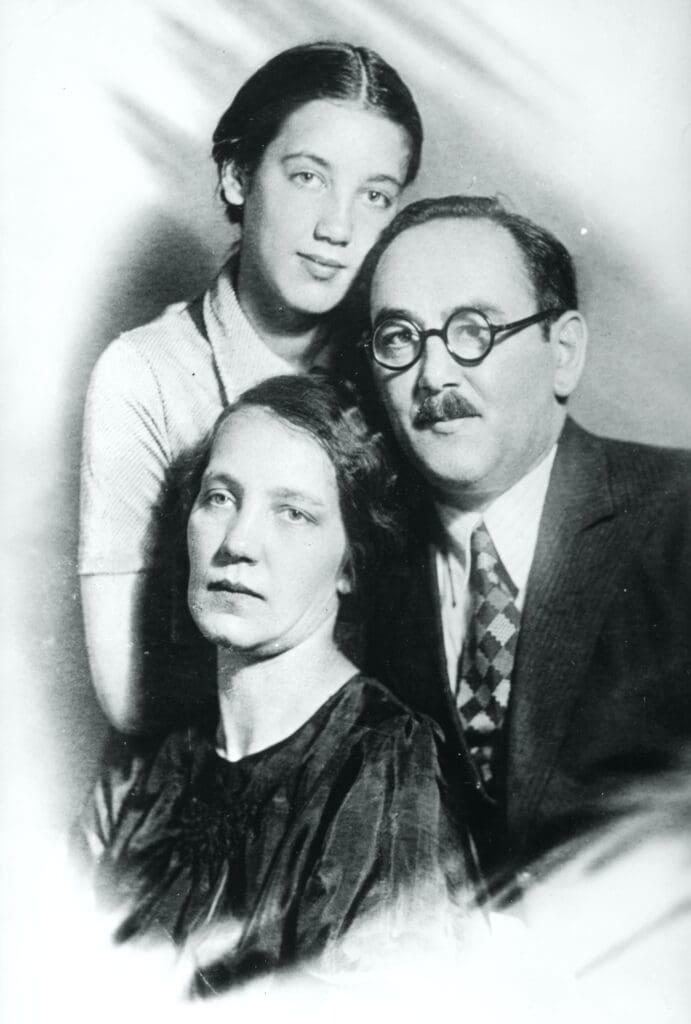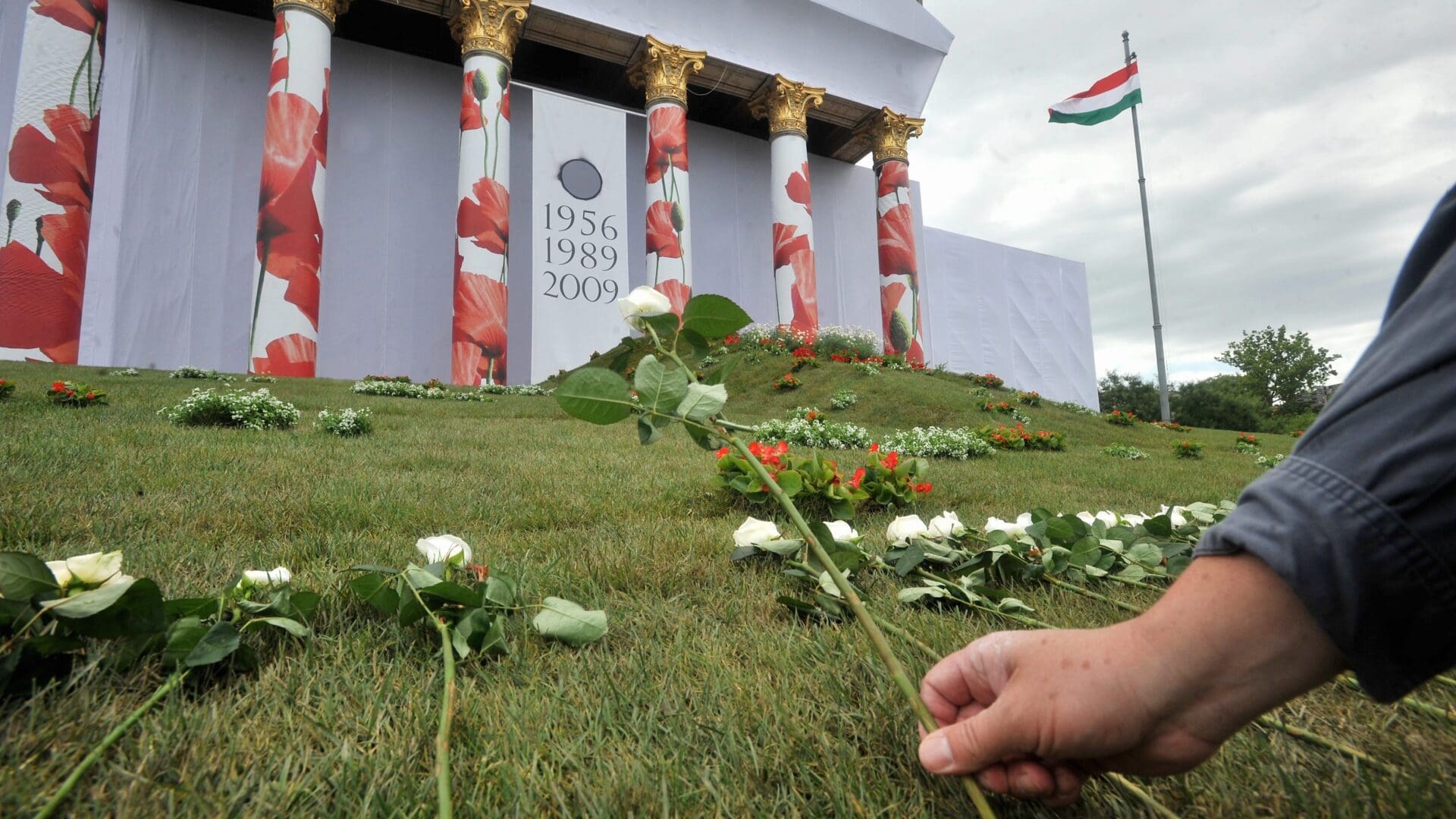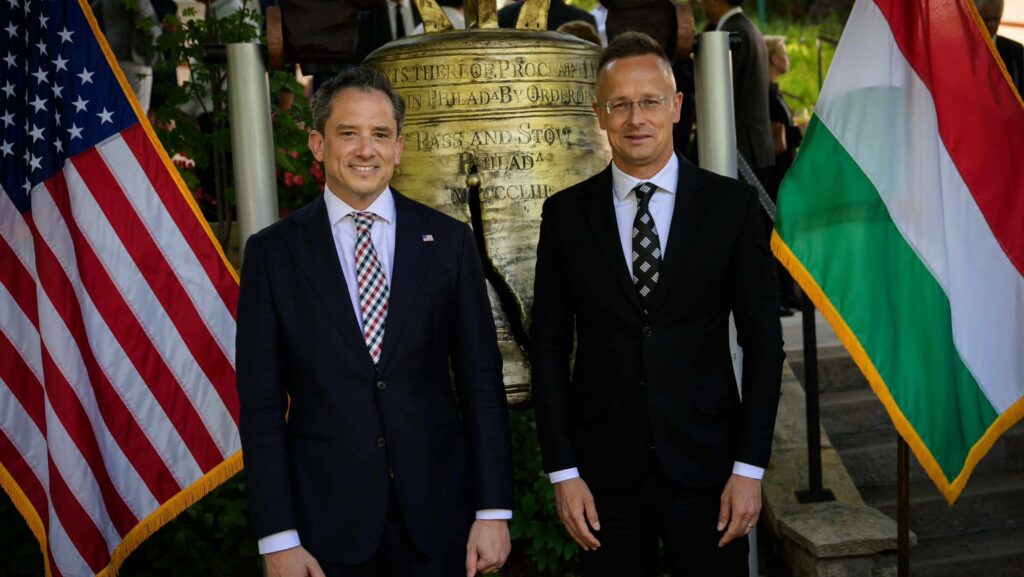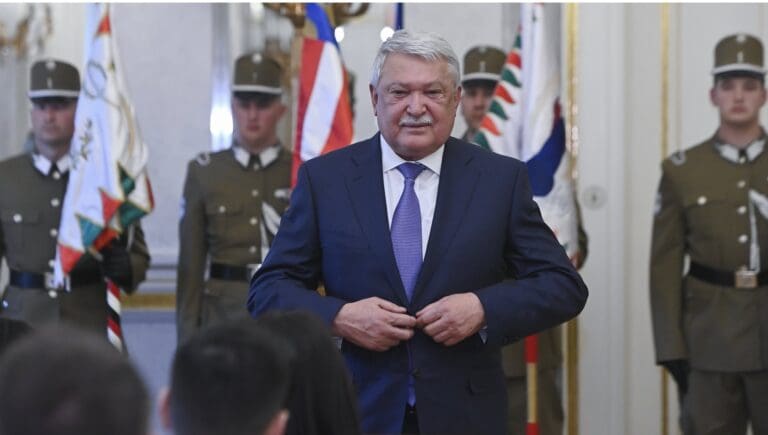‘The hushing up of the weak sides and the exaggeration of positive sides is a characteristic feature of obituary notices today. That, of course, is an unwise custom. We do not wish to follow it. We wish to say only what is true’—thus wrote Stalin in his obituary of early Communist G. Telia in 1907. The dark dictator happened to be right about this, and in this article I will therefore attempt to present a nuanced picture of Nagy’s legacy, both positive and negative.
Imre Nagy, Prime Minister and martyr of the 1956 Revolution, was born on 7 June 1896 in Kaposvár and was executed on 16 June 1958, exactly 65 years ago. The funeral ceremony for Imre Nagy and his fellow martyrs on 16 June 1989 in front of a crowd of 250,000 people in Heroes’ Square of Budapest was a symbolic event of the regime change, and their ceremonial reburial took place in plot 301 of the New Public Cemetery in the capital city.
Born into a poor, peasant family, he came into contact with the social democratic movement at an early age.[i] He was drafted into the army in 1915 and a year later was taken prisoner of war on the Russian front. He took part in the Russian Civil War as a member of the Red Guard and joined the Bolshevik Party in Irkutsk in 1920. After a short stay in Hungary and Austria, he lived in Moscow from 1930. Although his biographies say that he was dismissed from his post and expelled from the party during the Stalinist terror, it is perhaps worth pointing out that he was a Chekist (member of the political police) in 1921–22 and then served in the Soviet military counter-intelligence. After his return to the Soviet Union, he immediately volunteered to work as an informer for the OGPU, the Communist secret police, called People’s Commissariat for Internal Affairs (NKVD) from 1934.
According to some authors, he filed reports against numerous people, some of whom were executed.
He proudly wrote in his handwritten autobiography in 1938: ‘For a long time, I have been devotedly and honestly cooperating with the NKVD in the struggle to destroy all kinds of enemies of the people.’[ii]

In 1944 he returned home as a leader of the Hungarian Communist Party and became Minister of Agriculture in the Provisional Government. He was Minister of the Interior from February 1945 to March 1946 and Speaker of the National Assembly from 1947 to 1949. In 1950 he was Minister of Food, in 1952 Minister of Collection (thus playing a significant role in the ‘attic sweeps’, that is, the forced collection of foodstuffs from farmers), and at the end of 1952, he became deputy to Prime Minister Mátyás Rákosi, the infamous Communist dictator. In 1951, he was appointed to the Political Committee, the narrow governing body of the state party, the Hungarian Workers’ Party (MDP).
This period of his life is largely overlooked in his biographies. Historian János M. Rainer devotes merely a few sentences to his role as Minister of the Interior.[iii] In reality,
Nagy had a major role in turning Hungary into a Soviet-style dictatorship.
Nagy’s task was to ‘purge the administration of reaction’, and the Ministry of the Interior supervised the administration. The ministry also played an important legislative role, including the drafting and implementation of the decree on the expulsion of the ethnic German population. The Ministry of the Interior also included the police, including the political police and the economic police. The political police (PRO) at the time was heavily involved in the illegal arrests and the torturing of civilians, the spying on anti-Communist politicians and activists, but also rape, pillage and murder.[iv]
The story of the expulsion of Germans is an even darker one.[v] At the meeting of the Council of Ministers on 22 December 1945, Nagy presented the draft of the expulsion law,
which was based on the collective guilt of the ethnic German population in Hungary.
In a decree issued on 29 December 1945, the government included as a primary subject for expulsion anyone who, at the time of the 1941 census, had declared himself to be of German mother tongue or German nationality—clearly without any evidence of pro-Nazi views or activities. This was done in accordance with the will of the Soviet Chairman of the Allied Supervising Committee (SZEB), Marshal Voroshilov.
On 15 January 1946, the Nagy issued another decree, which stated that the proportion of those exempted from expulsion could not exceed 10 per cent of the German population of a district, town or county. The number of ‘innocent’ people was therefore limited and no real examination of personal political responsibility was allowed—deportations became a ‘numbers game’, a quote to be filled. It placed German nationals at the mercy of local Communist commissars. Historian Sándor Balogh was the first to publish[vi] that, according to the data of the Office for Social Care, the Hungarian government deprived at least 185,000 ethnic Germans of their citizenship and their movable and immovable property between 1946 and 1948, and resettled them in starving and ruined Germany. According to Ágnes Tóth,[vii] during this period, a total of about 248,600 cadastral acres of land were transferred from the Germans in Hungary to the Hungarian state. She writes that in 1941, the Germans in Hungary owned a total of about 60,400 houses. Between 1945 and 1948, the Hungarian state took 44,750 of these properties (i.e. 74.1 per cent) from them.
The entire story is full of alarming metaphors. During the German occupation, Jewish councils were created—now ‘Swabian councils’ were formed.[viii] During the Second World War, Jewish men were taken away for humiliating labour service. However, Soviet Military Order 0060 was issued on 22 December 1944 by Marshal Malinovsky, commander of the 2nd Ukrainian Front, which had invaded Hungary during World War II, and Marshal Tolbukhin, commander of the 3rd Ukrainian Front: on the basis of this document, ethnic Germans (and Hungarians) were deported for forced labour (Malenky robot) to the GUPVI camps of the Soviet Union in 1944-45. In 1996, writer Ervin Lázár devoted an entire short story to the expulsion of the Swabians (ethnic Germans) of Györköny. In the work, an elderly Swabian couple are hidden by the villagers, who, having lost everything, flee from Györköny to escape deportation—
all disturbingly reminiscent on the story of rescuers of Jews during the Holocaust.
Some historians call this an ‘ethnic cleansing’, while others debate the ‘Holocaustising’ of the deportation of Germans. The definition contained in Article II of the 1948 UN Genocide Convention describes genocide as a crime committed with the intent to destroy a national, ethnic, racial or religious group, in whole or in part. ‘Any of the following acts committed with intent to destroy, in whole or in part, a national, ethnic, racial or religious group, as such: (a) Killing members of the group; (b) Causing serious bodily or mental harm to members of the group; (c) Deliberately inflicting on the group conditions of life calculated to bring about its physical destruction in whole or in part; (d) Imposing measures intended to prevent births within the group; (e) Forcibly transferring children of the group to another group.’ Furthermore, a 1993 United Nations Commission defined it more specifically as, ‘the planned deliberate removal from a specific territory, persons of a particular ethnic group, by force or intimidation, in order to render that area ethnically homogenous.’ One might argue that in a legal sense, the deportation of the German population of Hungary could be labelled a genocide or at least an ethnic cleansing.
The author of these lines does not wish to draw a comparison between the Holocaust and the expulsion of Germans, but merely wishes to note that all genocides and ethnic cleansings have things in common in their brutality and total indifference to humanity. In fact, the famous liberal author, István Bibó clearly compared the expulsion of the Germans to the Holocaust in his contemporary memorandum.[ix]
As mentioned above, in 1952, Nagy became Minister of Collections. According to historians, between 1948 and 1956, 193 826 people were convicted by the courts for ‘endangering the public supply’, and more than 120 000 in 1951-53 alone.
Many of these trials resulted in death sentences.
Between 1950 and 1953, more than 600 000 farmers left agriculture for good in their desperation, 220 000 of whom left in 1952. ‘Although Nagy supposedly disagreed with this agricultural policy, he faithfully fulfilled his mandate’—notes publicist Gábor Sebes.[x]
After Stalin’s death, on 4 July 1953, he was appointed by Soviet order to succeed the unpopular Rákosi as head of government. Soviet terror did not, of course, cease during this period, and according to the National Remembrance Committee’s (NEB) research, between that date and the events of October 1956, 57 people were executed by court order alone (obviously there were many more atrocities that were not legal on paper), including, for example, the antisemitic show trial of the military officer Tamás Tószegi Freund, falsely accused of espionage.[xi]
After the Soviet leadership ordered him to Moscow in early 1955, they became dissatisfied with Nagy, so the MDP expelled him from its ranks, and the National Assembly dismissed him as Prime Minister on 18 April 1955. His party membership was restored on 13 October 1956.[xii] On the day of the outbreak of the revolution, 23 October, he was reinstated in the party’s supreme leadership at the demand of the demonstrators, and the next day he was again appointed head of government. His actions were initially disappointing because, as a Communist, he tried to moderate the demands of the revolution, which he considered excessive. On 28 October he declared a ceasefire,ethnic called for the withdrawal of Soviet troops, declared a multi-party system and dissolved the political police. When, despite the ceasefire, more Soviet troops arrived, on 1 November he declared Hungary’s neutrality and withdrawal from the Warsaw Pact, asking for the support of the four great powers and the UN.
At dawn on 4 November, he made a dramatic speech announcing the Soviet military intervention and took refuge in the Yugoslav embassy with several others. On 22 November, he left the embassy, whereupon he was arrested by the Soviets and detained in Snagov, Romania. It is important to mention that in his notes written in Snagov, he declared his firm commitment to Socialism, wrote highly antisemitic comments directed at Rákosi, blamed Rákosi for standing up for the right of Hungarians in the neighbouring countries (a very rosy interpretation of Rákosi’s role, nevertheless, characteristic of Nagy’s internationalism), and wrote that the only reason he had stood up for the revolution was to ‘save’ the ‘results’ of Socialism this way.[xiii]
He and his companions were brought back to Budapest in April 1957. His trial began on 9 June 1958 in complete secrecy. He denied the charges and refused to admit the jurisdiction of the court. On 15 June 1958, the People’s Court sentenced him to death on charges of treason without the possibility of appeal. Nagy did not ask for clemency, and the next day,
at dawn on 16 June, he was executed in the courtyard of the Budapest Prison
together with Pál Maléter and Miklós Gimes. Their bodies were buried in an unmarked grave.
Nagy was a highly controversial figure in Hungarian history, whose assessment is still a source of intense debates. His statue was removed from near the Hungarian parliament in 2018 by the Fidesz government and moved to a remote location amid fierce protests from the left-wing media. As a scholar of twentieth-century dictatorships and the Holocaust, I find it necessary to note: it is astonishing that a statue of Imre Nagy, whose political career was marred by the servile facilitation of a totalitarian dictatorship, physical violence, racism, deportation of ethnic groups, illegal executions and widespread, state-organised theft, could have been centrally located for so long.
Imre Nagy did stand up for the Hungarian Revolution in 1956—for debatable reasons—; but to portray him as a convinced democrat, or a hero of Hungarian popular representation and individual freedom would be a serious distortion. His role must be treated in its proper place: his merits must not be denied, but his sins must not be forgotten.
[i] János M Rainer, Nagy Imre. Politikai életrajz. I-II. vols. Bp., 1956-os Intézet, 1996.
[ii] As cited in: Gábor Sebes, ‘Rövid kurzus Nagy Imréről’, Mandiner.hu (15 Oct. 2018), https://mandiner.hu/cikk/20181015_sebes_gabor_rovid_kurzus_nagy_imrerol, accessed on 15 June 2023.
[iii] Rainer, Nagy Imre, vol. 1., pp 295 and 311. It should be noted here that biographies of the perpetrators of crimes against humanity on a similar scale do not usually summarise such actions in a few sentences—historians usually devote a whole chapter to the history of their victims.
[iv] On the role of the PRO see: László Bernát Veszprémy: Kápók a múlt fogságában. Náci koncentrációs táborok magyar zsidó funkcionáriusai a népbíróság előtt, Bp., Nemzeti Emlékezet Bizottsága, 2023.
[v] This and the next few passages are based on the following books: István Fehér, A magyarországi németek kitelepítése, 1945–1950, Budapest, Akadémiai, 1988; György Zielbauer, Adatok és tények a magyarországi németség történetéből, 1945–1949. Budapest, Akadémiai. 1989.; Johann Weidlein: A magyarországi németség küzdelme fennmaradásáért: Dokumentáció, 1930–1950, Heidelberg, Suevia Pannonica. 1996.; A magyarországi Szövetséges Ellenőrző Bizottság jegyzőkönyvei, 1945–1947. Ed. István Feitl, Budapest, Napvilág, 2003.
[vi] Sándor Balogh, Magyarország külpolitikája, 1945–1950. Bp., Kossuth, 1988. 101.
[vii] Ágnes Tóth, Telepítések Magyarországon 1945–1948 között: A németek kitelepítése, a belső népmozgások és a szlovák–magyar lakosságcsere összefüggései, Kecskemét, Bács-Kiskun Megyei Önkormányzat Levéltára, 1993, 191.
[viii] Iván Boldizsár, Don – Buda – Párizs Bp., Magvető, 1983. 208. I’d like to thank Áron Máthé for calling my attention to this source.
[ix] Rainer, Nagy Imre, vol. 1., page 312.
[x] Sebes, ‘Rövid kurzus Nagy Imréről’.
[xi] The list of those executed on the basis of Hungarian court rulings between 1945 and 1988 as reported on the website of the Committee of National Remembrance, https://neb.hu/asset/phpPiBDEy.pdf and on the website titled Jeltelenül eltemetve (Buried in an unmarked grave) of the Historical Archives of the Hungarian State Security, https://www.jeltelenul.hu/toszeghy-tamas
[xii] This and the next few passages are based on Rainer, Nagy Imre, vol. 2.
[xiii] Sebes, ‘Rövid kurzus Nagy Imréről’.








